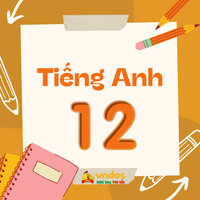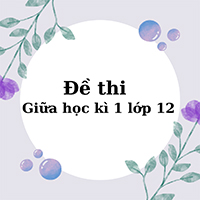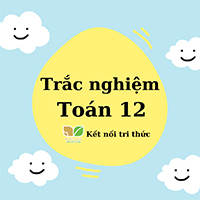Sách bài tập Tiếng Anh 12 Global Success Unit 2 Reading
SBT Tiếng Anh 12 Unit 2 Reading Global Success
Giải SBT Tiếng Anh 12 Global Success unit 2 Reading bao gồm đáp án các phần bài tập sbt tiếng Anh 12 Global Success Unit 2 hỗ trợ các em học sinh chuẩn bị bài tập tại nhà trước khi đến trường.
1. Read the following passage and circle the letter A, B, C, or D to indicate the correct word or phrase that best fits each of the numbered blanks.
(Đọc đoạn văn sau và khoanh tròn chữ cái A, B, C hoặc D để chỉ ra từ hoặc cụm từ đúng phù hợp nhất với mỗi chỗ trống được đánh số.)
Brazil - A Diverse Ethnic & Cultural Heritage
Brazil is (1) ______ to the largest population in Latin America, of more than 215 million people. Most of them live in the south-central area, (2) _____ includes the industrial cities of Sao Paulo, Rio de Janeiro, and Belo Horizonte. The pace of urbanisation has been rapid, with 75% of the population living in (3) ______ areas by 1991. While this growth has contributed to economic development, it has also led to serious social, environmental, and political (4) ______ in major cities. Nevertheless, Brazil remains famous for its breathtaking natural beauty.
The Brazilian population is (5) ______ four main groups: the Portuguese, who colonised Brazil in the 16th century: Africans who were brought to Brazil as slaves: various other European, Middle Eastern, and Asian immigrant (6) ______ who have settled in Brazil since the mid-19th century, and the indigenous people. Although the Portuguese were once the dominant European ethnic group in Brazil, waves of immigration have resulted (7) ______ a diverse ethnic and cultural heritage.
Between 1875 and 1960, approximately 5 million Europeans emigrated to Brazil, settling mainly in the four southern states of Sao Paulo, Parana, Santa Catarina, and Rio Grande do Sul. The immigrants were primarily from Italy, Germany, Spain, Japan, Poland, and the Middle East. The largest Japanese (8) ______ in the world is located in Sao Paulo.
The cultures of the different ethnic groups have together created the modern Brazilian way of life.
|
1. A. house |
B. home |
C. land |
D. place |
|
2. A. who |
B. that |
C. which |
D. whose |
|
3. A. urban |
B. rural |
C. city |
D. country |
|
4. A. fields |
B. attractions |
C. challenges |
D. topics |
|
5. A. made from |
B. included |
C. consisted of |
D. made up of |
|
6. A. groups |
B. people |
C. organisations |
D. blocks |
|
7. A. on |
B. with |
C. in |
D. of |
|
8. A. identity |
B. community |
C. majority |
D. unity |
Gợi ý đáp án
|
1. B |
2. C |
3. A |
4. C |
5. D |
6. A |
7. C |
8. B |
Hướng dẫn dịch
Brazil là nơi có dân số lớn nhất ở Mỹ Latinh, với hơn 215 triệu người. Hầu hết họ sống ở khu vực trung nam, bao gồm các thành phố công nghiệp Sao Paulo, Rio de Janeiro và Belo Horizonte. Tốc độ đô thị hóa diễn ra nhanh chóng, với 75% dân số sống ở khu vực thành thị vào năm 1991. Mặc dù tốc độ tăng trưởng này góp phần phát triển kinh tế nhưng nó cũng dẫn đến những thách thức nghiêm trọng về xã hội, môi trường và chính trị ở các thành phố lớn. Tuy nhiên, Brazil vẫn nổi tiếng với vẻ đẹp tự nhiên ngoạn mục.
Dân số Brazil được tạo thành từ bốn nhóm chính: người Bồ Đào Nha, người đã xâm chiếm Brazil vào thế kỷ 16; Những người châu Phi bị đưa đến Brazil làm nô lệ; nhiều nhóm nhập cư châu Âu, Trung Đông và châu Á khác đã định cư ở Brazil từ giữa thế kỷ 19; và người dân bản địa. Mặc dù người Bồ Đào Nha từng là nhóm dân tộc châu Âu thống trị ở Brazil, làn sóng nhập cư đã dẫn đến một di sản văn hóa và dân tộc đa dạng.
Từ năm 1875 đến năm 1960, khoảng 5 triệu người châu Âu di cư đến Brazil, định cư chủ yếu ở bốn bang phía nam Sao Paulo, Parana, Santa Catarina và Rio Grande do Sul. Những người nhập cư chủ yếu đến từ Ý, Đức, Tây Ban Nha, Nhật Bản, Ba Lan và Trung Đông. Cộng đồng người Nhật lớn nhất thế giới nằm ở Sao Paulo.
Nền văn hóa của các nhóm dân tộc khác nhau đã cùng nhau tạo nên lối sống hiện đại của người Brazil.
2. Read the following passage and circle the letter A, B, C, or D to indicate the correct answer to each of the questions.
(Đọc đoạn văn sau và khoanh tròn chữ cái A, B, C hoặc D để chỉ ra câu trả lời đúng cho mỗi câu hỏi.)
According to some Canadian news media, university students don't like to share their own cultures with each other and are not keen to learn about new ones. However, a study conducted earlier this year at the University of Winnipeg found the opposite.
Its aim was to gauge undergraduate students' attitude towards cultural identity and cultural diversity. It was influenced by the findings of a 2021 study that examined how nine dally Canadian newspapers defined the term 'multiculturalism'.
The current study included 10 undergraduate students who participated in two discussions about culture and heritage. All participants agreed on the importance of multiculturalism. Seven of them had arrived in Canada in the last 10 years from different places including the Philippines, Pakistan, and Nigeria. The students talked about where they, their parents. and their grandparents came from, discussing everything from language to festivals. religion, and traditions. Three groups of students emerged. The first group maintained a strong connection with their heritage culture and values, and shared stories about their customs and how they made sure they didn't forget their heritage language. For example. one of them still liked listening to music in his home language. The second group felt a sense of belonging to a blend of cultures. They were exposed to different cultures when they grew up, however, they were open to and interested in experiencing other cultures through festivals and friends. The third group had experienced language and culture loss through the process of becoming Canadians. Although they were sad about that loss, they still felt enthusiastic about enriching Canadian culture and making it more diverse.
1. Which of the following can be the best title for the passage?
A. Preserving native cultures very important in Canada
B. Media and cultural diversity in Canada
C. Cultural diversity important to young Canadians
D. Multiculturalism across the world
2. According to the passage, the way university students feel about diversity and new cultures is ______ the perception of Canadian newspapers.
A. the same as
B. different from
C. similar to
D. more specific than
3. The word 'gauge' in paragraph 1 mostly means __________
A. discuss
B. compare
C. judge
D. highlight
4. The study at the University of Winnipeg was carried out ______ the 2021 study.
A. after
B. before
C. two years after
D. at the same time as
5. The word 'them' in paragraph 2 refers to _____
A. the university researchers
B. the study participants
C. the findings of the study
D. the places students came from
6. According to the passage, which of the following is NOT true about the study?
A. The participants talked about different aspects of their heritage culture.
B. Not all students could speak the language of their parents or grandparents.
C. In the process of becoming Canadians, all participants forgot their heritage language.
D. Some participants felt they were part of blended culture since they had experienced different cultures in their childhood.
7. How did one of the participants maintain his native language?
A. By sharing stories about family traditions.
B. By listening to songs in that language.
C. By going to music festivals.
D. By talking to friends and family.
8. It can be inferred from the passage that _____
A. despite their various experience of cultural heritage, students were all happy about living in a culturally diverse country
B. news media in Canada seldom talk about multiculturalism
C. Canadians are not willing to accept heritage values or a blend of cultures
D. students who maintain a strong connection with their heritage culture do not become Canadians
Gợi ý đáp án
|
1. C |
2. B |
3. C |
4. A |
5. B |
6. C |
7. B |
8. A |
Hướng dẫn dịch
Theo một số phương tiện truyền thông Canada, sinh viên đại học không thích chia sẻ nền văn hóa của họ với nhau và không muốn tìm hiểu về những nền văn hóa mới. Tuy nhiên, một nghiên cứu được thực hiện vào đầu năm nay tại Đại học Winnipeg lại cho thấy điều ngược lại.
Mục đích của nó là đánh giá thái độ của sinh viên đại học đối với bản sắc văn hóa và sự đa dạng văn hóa. Nó bị ảnh hưởng bởi những phát hiện của một nghiên cứu năm 2021 nhằm xem xét cách 9 tờ báo Canada định nghĩa thuật ngữ 'chủ nghĩa đa văn hóa'.
Nghiên cứu hiện tại bao gồm 10 sinh viên đại học tham gia vào hai cuộc thảo luận về văn hóa và di sản. Tất cả những người tham gia đều đồng ý về tầm quan trọng của đa văn hóa. Bảy người trong số họ đã đến Canada trong 10 năm qua từ những nơi khác nhau bao gồm Philippines, Pakistan và Nigeria. Các sinh viên nói về nơi họ, cha mẹ của họ. và ông bà của họ đến từ đó, thảo luận về mọi thứ, từ ngôn ngữ đến lễ hội. tôn giáo, truyền thống. Ba nhóm học sinh xuất hiện. Nhóm đầu tiên duy trì mối liên hệ chặt chẽ với các giá trị và văn hóa di sản của họ, đồng thời chia sẻ những câu chuyện về phong tục của họ cũng như cách họ đảm bảo không quên ngôn ngữ di sản của mình. Ví dụ. một trong số họ vẫn thích nghe nhạc bằng tiếng mẹ đẻ của mình. Nhóm thứ hai cảm thấy mình thuộc về một nền văn hóa pha trộn. Họ được tiếp xúc với các nền văn hóa khác nhau khi lớn lên, tuy nhiên, họ cởi mở và thích trải nghiệm các nền văn hóa khác thông qua các lễ hội và bạn bè. Nhóm thứ ba đã trải qua sự mất mát về ngôn ngữ và văn hóa trong quá trình trở thành người Canada. Dù họ rất buồn vì sự mất mát đó, họ vẫn cảm thấy nhiệt tình trong việc làm phong phú thêm nền văn hóa Canada và làm cho nó trở nên đa dạng hơn.
Trên đây là trọn bộ Sách bài tập Tiếng Anh 12 Global Success Unit 2 Reading.










